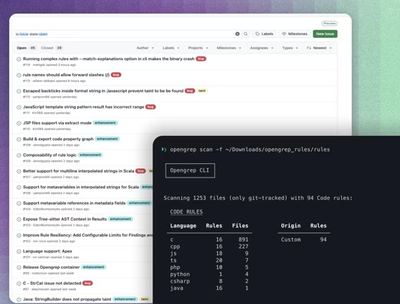🚀 Launchpad
Launchpad is a suite of configuration-driven tools to manage media installations that can:
- Launch, control and monitor muiltiple processes (via PM2)
- Download and locally cache content from various common web APIs
- Bootstrap exhibition PCs running Windows 10 with common exhibit settings
- Consolidate and route application logs
🔍 All Features
- App Monitoring
- Start, monitor (relaunch on crash/quit), and stop any number of apps in parallel
- Control which apps are in the foreground, minimized or hidden
- Apps are launched in sequence (e.g. if one app requires data from another)
- Log routing and filtering
- Content Download and Caching
- Supported sources:
- JSON with asset urls
- Airtable API
- Contentful API
- Strapi API (3.x.x)
- Caching using If-Modified-Since HTTP header
- Full rollback to previous content on download errors
- Text and image transforms (replace strings, scale images, ...)
- Concurrent download
- Multiple content sources for a single config
- Configurable via json
- Inheritable configs in the following order:
LaunchpadContent default valuesLaunchpadContent instance config (passed via constructor)ContentSource instance config (passed via constructor)
- PC Setup and Scaffolding
- Install common apps
- Configure Windows Explorer settings
- Configure Windows power settings to never sleep
- Create automatic daily launch tasks and reboots
- Disable updates, prompts, notifications, UI elements
- See ./packages/scaffold/README.md for more info
Getting Started
- Create a
launchpad.json config file. See #Configuration - Install Launchpad as a global or local dependency:
- Global:
npm i -g @bluecadet/launchpad (or npm i -g bluecadet/launchpad from GitHub) - Local:
npm i @bluecadet/launchpad (or npm i bluecadet/launchpad from GitHub)
- Run Launchpad
- Global:
launchpad - Local:
npx launchpad
In all the following examples, we'll use launchpad, but you can always replace it with npx launchpad for local dependencies.
Config Loading
- By default, Launchpad looks for
launchpad.json or config.json at the cwd (where you ran launchpad ... from) - You can change the default path with
--config=<YOUR_FILE_PATH> (e.g. launchpad --config=../settings/my-config.json) - If no config is found, Launchpad will traverse up directories (up to 64) to find one
- All config values can be overridden via
--foo=bar (e.g. --logging.level=debug)
Startup Options
The following commands are available when running launchpad <command> or npx launchpad <command>.
launchpad: Same as launchpad start.launchpad start: Starts launchpad by updating content and starting apps. (default)launchpad stop: Stops and kills any existing PM2 instance.launchpad content: Only download content. Parses your config as config.content || config.launchpad monitor: Only start apps. Parses your config as config.monitor || config.launchpad scaffold: Configures the current PC for exhibit environments (with admin prompt).
Type launchpad --help for more info.
Configuration
Most Launchpad configuration is individual to each module, with only a few global settings for commands and logging.
The general structure for your launchpad.json should be:
{
"content": {},
"monitor": {},
"logging": {}
}
Each module has sensible defaults and is optional, so you could only define content settings if you only want to download content, or only define monitor settings if you only want to launch and monitor apps.
See the following classes for a full list of all available options:
LaunchpadOptions: All options for launchpad combined into a single object
monitor (MonitorOptions): Configures which apps to runcontent (ContentOptions): Configures which content to download
sources: An array containing any amount of the following content source options:
logging (LogOptions): Configures how logs are routed to the console and to files
Config Example: Starting Two Apps
The following launchpad.json will launch two apps. The first app window will be foregrounded after launch, the second app will be minimized. If any of the apps exit, PM2 will relaunch them.
{
"monitor": {
"apps": [
{
"pm2": {
"name": "main-app",
"script": "my-main-app.exe",
"cwd": "../apps/"
},
"windows": {
"foreground": true
}
},
{
"pm2": {
"name": "side-app",
"script": "my-side-app.exe",
"cwd": "../apps/",
"args": "--custom-arg=true"
},
"windows": {
"minimize": true
}
}
]
}
}
Config Example: Downloading JSON Files
The following launchpad.json would download content from the Flickr API. Content would be downloaded into .downloads/spaceships (based on the default .downloads/ directory and the id field of the content source).
{
"content": {
"sources": [
{
"id": "spaceships",
"files": {
"spaceships.json": "https://api.flickr.com/services/feeds/photos_public.gne?format=json&nojsoncallback=1&tags=spaceship",
"rockets.json": "https://api.flickr.com/services/feeds/photos_public.gne?format=json&nojsoncallback=1&tags=rocket"
}
}
]
}
}
Each API request will be stored as an individual json:
.downloads/spaceships/spaceships.json.downloads/spaceships/rockets.json
All images contained in these json files will be downloaded while retaining the remote directory structure. So https://live.staticflickr.com/65535/51886202435_e49e7ef884_m.jpg would be downloaded to .downloads/65535/51886202435_e49e7ef884_m.jpg.
Content Credentials
Some content sources require credentials to access their APIs.
These can all be stored in a local .credentials.json file which maps content-source IDs to their credentials.
Below is an example for Airtable, Contentful and Strapi sources:
{
"exampleAirtableSource": {
"apiKey": "<YOUR_AIRTABLE_API_KEY>"
},
"exampleContentfulSource": {
"previewToken": "<YOUR_CONTENTFUL_PREVIEW_TOKEN>",
"deliveryToken": "<YOUR_CONTENTFUL_DELIVERY_TOKEN>",
"usePreviewApi": false
},
"exampleStrapiSource": {
"identifier": "<YOUR_API_USER>",
"password": "<YOUR_API_PASS>"
}
}
Scaffolding
The @bluecadet/launchpad-scaffold package is a collection of PS1 scripts to configure PCs for exhibit environments.
To run the scaffold scripts, you can call launchpad scaffold, or manually run packages/scaffold/setup.bat as administrator.
- On first run, you'll be prompted to edit your user config
- Once you close the config editor, the script will continue
- By default, all scripts must be confirmed with a y/n prompt
- To automate execution of all scripts, set
ConfirmAllScripts to $false - You can copy the generated user config from
packages/scaffold/config/user.ps1 to other PCs to apply the same settings
Credit
Most scripts and settings are based on examples and precedents from various existing resources. Besides StackOverflow, the following two repositories have been crucial references:
Packages
This repo is a monorepo that includes the following packages:
Each of these packages can be launched independently (except for utils), so if you only need app-monitoring or content updates, you can install only @bluecadet/launchpad-monitor or @bluecadet/launchpad-content.
Requirements
Launchpad requires Node 16+, but Node 17.5.0+ is recommended for better Windows API integration and workspaces support.
We recommend installing Node via nvm-windows:
nvm install 17.5.0
nvm use 17.5.0
If you run into issues installing subpackages, try upgrading npm to version 8.5.1 or above.
npm i -g npm@8.5.1
Roadmap



